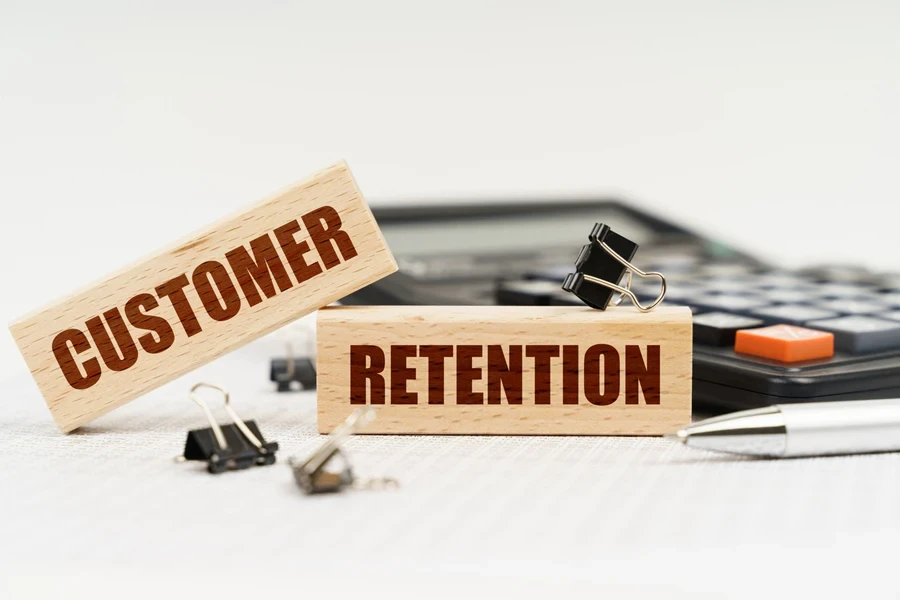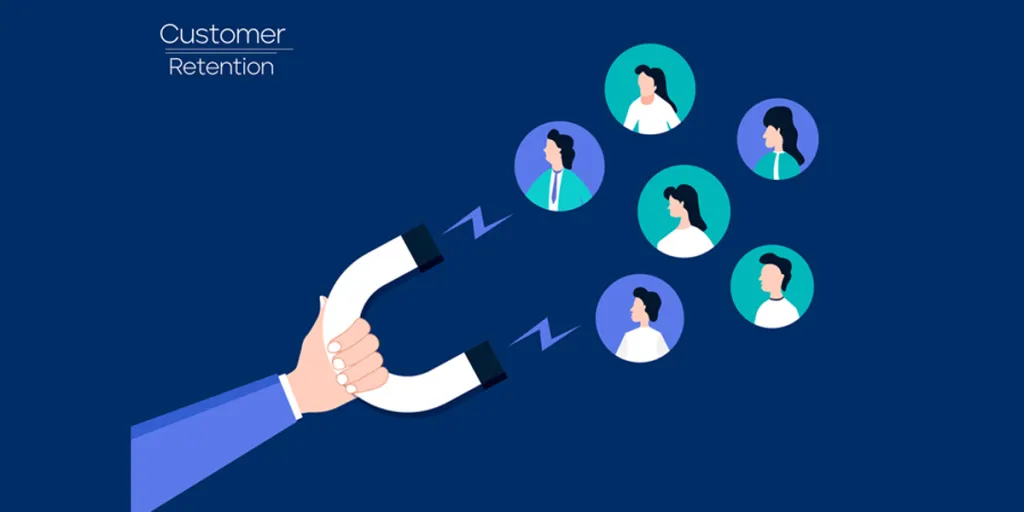A common challenge most small businesses face today is acquiring new customers, as owners have to invest their time and resources in marketing to make people interested in what they are offering. In fact, studies show that 82% of companies agree that it is more expensive to acquire a new customer than retain an already existing one.
This means that if a person buys from you, you have to do everything possible to ensure they don’t leave. However, customer retention is not as easy as it seems because today’s marketplace is overcrowded with a myriad of businesses, which exposes your clients to a wide range of options.
Therefore, you have to devise strategies to keep them engaged and invested in your business. Some examples of strategies you can implement include improving your customer service, personalizing customer experiences, and more, which we will discuss in this article. But first, let us define customer retention and understand the reasons why it is important.
Table of Contents
What is customer retention?
Why customer retention matters
Important customer retention metrics
Top 9 customer retention strategies
Conclusion
What is customer retention?

Customer retention is defined as the ability of a business to turn an ordinary customer into a repeat customer for a long time without taking their business to another brand.
For instance, if a single customer makes more than one purchase in one year, they have more influence on your brand than several buyers who make a single purchase without returning.
In this case, you can solely depend on the business of retained customers more than that of a new customer, as long as you can provide quality products and services that leave them satisfied.
Why customer retention matters
There are various reasons why you should prioritize retaining your customers. Here are some reasons why customer retention is crucial for your business:
1. Acquiring a new customer is costlier than retaining one

As said earlier, a majority of modern businesses agree that they pay a lot more money when attracting a new customer than when retaining an already existing customer. A Harvard Business Review study also revealed that it is 5 to 25 times more expensive to acquire than maintain a customer in their business.
This shows that if you already have existing clients who are willing to spend their money in exchange for your product or service, the only thing you are supposed to do is keep them happy and satisfied. In the end, you will have a prolonged and strong relationship with your customers, which will reduce your advertising budget.
2. Loyal customers tend to spend more over time
The more loyal a customer is to a brand, the more likely they are to invest more in its products and services. Some studies have revealed that returning customers can spend up to 67% more than first-time customers, a statistic that emphasizes the need to retain your current customers.
3. Customer retention boosts referrals and word-of-mouth marketing

Another reason to retain your customers is that satisfied customers act as brand advocates, as they can recommend your brand to their friends, family, and workmates. Studies have shown that 70% of happy customers are more likely to recommend a company to others.
In addition to word-of-mouth marketing, your business will attract audiences that have a high likelihood of buying or subscribing to the products and services that you provide, because 4 out of 5 people are likely to buy when referred by a friend.
4. Losing customers also means losing their future value
If you lose a customer, you not only lose their customer lifetime value, but also possible future purchases and referrals to other people for your business.
Therefore, if you want to achieve long-term business success, you must prioritize retaining your most satisfied and engaged customers. When you nurture your relationship with existing customers, you can generate steady revenue, boost profitability, and strengthen brand loyalty.
Important customer retention metrics
To develop a successful customer retention strategy, you need to carefully consider key performance indicators (KPIs) that will monitor and measure its efficiency. The primary customer retention metrics you should track are as follows:
1. Customer retention rate (CRR)
Your customer retention rate is the percentage of customers who remain loyal to your business over a certain period of time.
To calculate your customer retention rate, subtract the number of new customers added from those at the end of the period, divide it by the total customers at the start, and then convert the value into a percentage.
2. Customer churn rate (CCR)
Customer churn rate is a customer retention metric that measures the percentage of customers who cancel their subscriptions or stop buying from you after a specified period.
The formula to calculate CRR is (lost customers/customers at the start of the period) × 100
3. Customer lifetime value (CLV)
This popular e-commerce metric calculates the accumulated revenue that a customer contributes to your business over a certain period. When calculating customer lifetime value, you use the values of your retention rate, the customer’s average order amount, and the number of purchases per year.
Below is the formula for finding CLV:
CLV = average order amount × purchases per year × retention rate
4. Net promoter score (NPS)
This customer retention metric helps you calculate a customer’s likelihood to recommend your brand to others.
To find the net promoter score, subtract the percentage of promoters from the percentage of detractors.
5. Repeat customer rate (RCR)
The repeat customer rate is the percentage of repeat business you receive after a certain period of time.
RCR = number of return customers/total number of customers × 100
6. Purchase frequency rate (PFR)
This is the rate at which a customer has made two or more purchases.
PFR = Total number of orders/total number of unique orders
The period over which you want to test these KPIs varies. It can either be on a weekly basis, monthly, yearly, or after several years. However, the best time to calculate these KPIs is every year so that you can get a clear picture and accommodate seasonal fluctuations.
Top 9 customer retention strategies
1. Respond to customer queries quickly

Taking less time to respond to queries is among the top customer retention strategies you can implement in your business. This follows a CX Trends Report by Zendesk, which shows that fast reply times lead to higher customer satisfaction.
In the report, 73 percent of surveyed customers revealed that quick support resolutions are essential for a good customer experience.
Although quicker responses lead to quicker solutions, if you can’t find the solution to a customer query immediately, it still pays to make an effort to reply to the customer within a short time.
Telling the customer that you have received their ticket can be considered a fast response. Besides, it is more beneficial to provide a timeframe they can expect for their problem to be resolved.
By establishing clear expectations regarding the resolution timeline, customers are likely to be more understanding and patient since they are aware of the progress towards resolving their concerns.
2. Get to know your customers

If you want to make your customers keep coming back, get to know them first. Make an effort to find out their interests, pain points, and things that make them happy.
You can do this by combining both quantitative and qualitative analysis, which is an effective way to gain valuable insights into their behavior and what makes them behave the way they do.
Use multiple sources of data collection, such as surveys, feedback widgets, and customer reviews, to gather information that will guide you in improving your services.
Remember to be ethical when collecting data without violating any privacy rules. Look for those points where utilizing them will be less likely to create issues with your customers. And lastly, creating a customer journey map plays a big role in helping you learn about your audience.
3. Optimize and personalize experiences

More often than not, customers get annoyed when they have to explain a problem over and over again. In addition, when these issues persist, they can cause them to opt out. To prevent these hurdles, personalizing experiences to suit the needs of each individual customer is a good approach to use.
With personalization, you can customize your interactions to suit the needs of each of your customers based on their interests, preferences, and behavior.
Some personalization tips that can significantly enhance your customer’s experience include individualized onboarding, customized product recommendations, and creating content and messaging that is specific to them. By trying these ideas with your existing customers, you enable them to resonate with and enjoy your content, which results in them feeling valued and appreciated.
4. Implement referral programs

Referral programs help with both customer acquisition and retention simultaneously. This kind of word-of-mouth advertising works well because it attracts new customers who are already confident in your company because they heard about you from a reliable source.
It builds goodwill with current clients, who benefit more from doing business with you and promoting your brand.
Store credit, cash, and free goods or merchandise are common forms of rewards. Providing these rewards to customers gives your business a competitive edge by encouraging repeat business and generating social proof.
5. Provide quick delivery options

Fast delivery options can significantly improve customer loyalty. By providing quick shipping, you enhance the convenience of shopping for your customers, making their experience more enjoyable and stress-free. Additionally, quick deliveries satisfy customers’ desire for instant gratification, leading to higher satisfaction levels.
In a crowded market, offering fast shipping helps you stand out from the competition. Customers are more inclined to choose companies that deliver promptly. Consistently fast deliveries also contribute to building a positive brand reputation, encouraging customer loyalty among those who appreciate timely service.
Quick shipping not only reduces cart abandonment, but it also encourages repeat purchases from satisfied customers, which are benefits you enjoy when you have a loyal customer base.
6. Encourage reviews and testimonials

Social proof, which includes reviews, testimonials, and case studies, helps guide customers in product selections and shapes their opinions about a brand. One example of a company that has leveraged this strategy to earn consumer trust is Salesforce.
The SAAS company features a dedicated page on its website, highlighting success stories from their customers and why they chose Salesforce services. The page highlights testimonies from brands such as F1, Santander, and Heathrow.
Reviews and testimonies not only attract new customers but also ensure that the current customers stick for a long time. As the excitement about your product or brand builds, loyal clients feel more justified about their purchase, making them less likely to leave.
7. Make returns easy and refundable

Although mistakes happen, refusing to issue refunds and making returns almost impossible is a way to guarantee that a customer will never buy from you again. Returns and refunds are customer service components. Therefore, you need to make the process easy and hassle-free.
If your clients feel confident in your ability to treat them fairly beyond making a purchase, and even after they have paid you, they will be more inclined to do business with you in the future.
8. Improve customer service and support

If a company has poor customer service, a big part of the reason comes from customers’ difficulties speaking directly to a representative. It could also be because of too much reliance on chatbots, a lack of proper training, or customers’ inability to find the right department to raise their issues.
Retaining customers starts with providing excellent customer service. Improving your customer service by making it direct, empathetic, and easy to navigate can make a big difference in helping you build a strong and extended relationship with your clients.
9. Incentivize loyalty
You can increase your customer retention rates by rewarding customers who are loyal to your brand. If you show customers that you value their business, you give them another reason to stay, aside from loving your products.
Some great ways to reward your best customers for their loyalty include providing the following:
- Discount codes or free shipping
- Customer loyalty programs
- VIP access
- Exclusive access to new products and features
By leveraging different types of loyalty programs, you can gather a lot of information about your customers, which will help you provide them with personalized content or marketing messages.
Conclusion
Building a strong customer base does not happen overnight. However, by leveraging the above tips, you will be on your way to creating loyal and dedicated customers willing to spread the word about your business.
Finally, you can discover invaluable insights like these and stay ahead in the world of e-commerce by exploring the latest blogs on Alibaba.com Reads.




